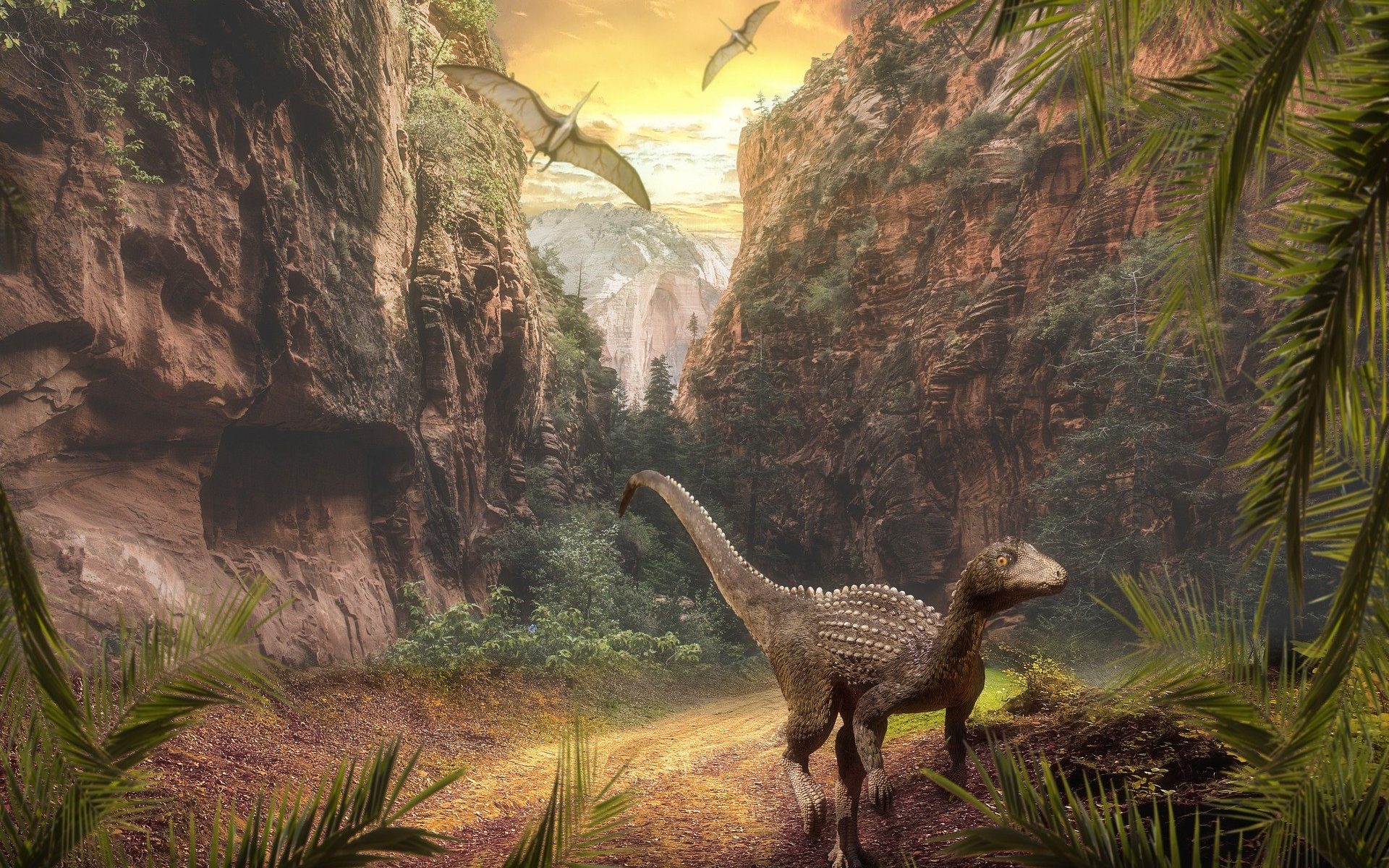Featured image: Landscape mountain sky by Enrique Lopez Garre, Pixabay License.
Authors: Rodrigo Muller and Maurício Garcia
Dinosaurs dominated terrestrial ecosystems for nearly 170 million years in the Mesozoic. There were three major groups of dinosaurs. The long-necked sauropodomorphs, which included the largest animals ever to live on land, could grow as long as a Boeing 737 aircraft. The meat-eating theropods, which included the famous Tyrannosaurus rex, have evolved into the modern dinosaurs: birds. And the bird-hipped ornithischians, an assorted group of herbivorous dinosaurs, evolved some of the most bizarre anatomy known in evolutionary history. This ranged from the plate-backed Stegosaurus, to the thumb-spiked Iguanodon, and from the exaggerated crests of Triceratops to the walking coffee table that is Ankylosaurus.
The early evolution of the dinosaurs is, however, littered with complications. The extreme age of the earliest members of the group, which are from the Late Triassic, or approximately 235 million years ago, has meant that many of the fossils are extremely fragmentary and fractured. This is combined with the fact that many groups of non-dinosaur animals that were alive at the same time, such as Herrerasauridae and Silesauridae, had similar anatomies to the early dinosaurs, being small, slender and two-legged. The ornithischian dinosaurs have a unique problem, though: there are currently no fossils of ornithischians from Triassic formations, with all the fossils we know of found in the later Jurassic and Cretaceous periods. This means, whilst we have direct evidence of the early evolution of the other dinosaur groups, the theropods and the sauropodomorphs, we have no way of knowing how the early ornithischians evolved, and this has created a ghost lineage in the family tree of nearly 35 million years. And this is lack of early fossils is particularly unfortunate; despite being the dominant herbivores for much of their existence, the ornithischians had humble beginnings. Early members of the group, such as the 200 million-year-old Lesothosaurus, were no bigger than a golden retriever, and they were insignificant in ecosystems compared to their dinosaur cousins. It is understanding this dramatic shift in ornithischian dinosaurs that remains one of the most challenging problems for palaeontologists today, although a new paper by Müller and Garcia in Royal Society Biology Letters potentially offers a solution.

For over 130 years the dinosaur family tree consisted of Ornithischia (bird-hipped dinosaurs) and Saurischia (lizard-hipped dinosaurs), which itself included the sauropodomorphs and theropods. Recent work, fuelled by new discoveries of fossils and new analytical techniques, has however seen other hypotheses proposed. Rodrigo Muller and Maurício Garcia, palaeontologists at the Federal University of Santa Maria in Brazil, suggest that Silesauridae, a Triassic group known from Africa, Europe, North America and South America, are early members of Ornithischia, prior to the evolution of the ‘true’ ornithischians that we currently recognise. This analysis also finds a pivotal position for the poorly preserved Pisanosaurus, once thought to be the earliest ornithischian but now more commonly seen as an early silesaurid, as the transitional form between the silesaurids and the ornithischians. Together, these findings mean that the ornithischians lose that dreaded ghost lineage in the dinosaur family tree, and that they become a well-documented Triassic group, in addition to their famous Jurassic and Cretaceous descendants.

Why does this all matter, though? Well, the early history of dinosaurs being so complicated means their biological and biogeographical evolution is poorly understood. This new finding backs up previous research that the earliest dinosaurs were found on South America and Africa, but suggests an earlier origin for the group in the Middle Triassic, 10-15 million years earlier than previously thought. This new research also suggests the earliest dinosaurs were carnivorous, in contrast to a more traditional view of omnivorous or herbivorous diets. However, the evolution of other features is still up for debate. The first feathers, seen in the 10,000 species of avian dinosaurs alive today, are thought to have originated in theropod dinosaurs around 120 million years ago, although whether non-theropod dinosaurs also had feathers is uncertain . Similarly, whether dinosaurs were warm or cold blooded is still a major debate in palaeontology, although one that is perhaps closer to being resolved . What is clear is that, despite Müller and Garcia possibly solving one of the major problems in dinosaur palaeontology, there are still many questions about early dinosaur evolution left unanswered. There is still a long way to go with untangling the early evolution of dinosaurs, and it is likely new fossil discoveries are necessary.
The early evolution of the bird-hipped dinosaurs by Tom Raven is licensed under a Creative Commons Attribution 4.0 International License.

